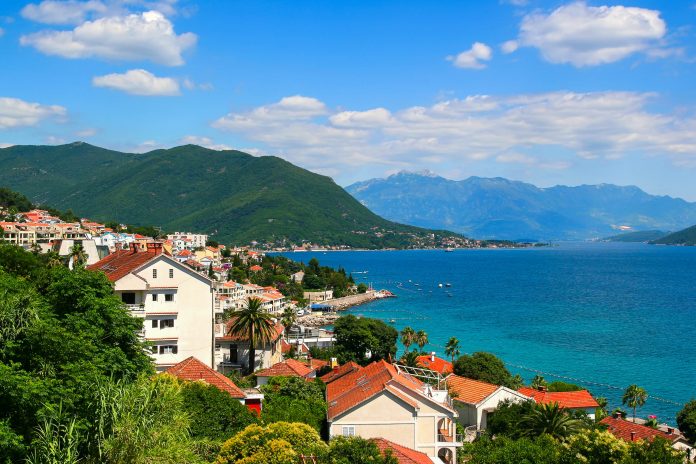Herceg Novi liegt am Eingang zur weltberühmten Bucht von Kotor im Westen Montenegros und hat neben einigen Stränden in der Umgebung einen interessanten Altstadtkern zu bieten.
Herceg Novi an der nördlichen Adriaküste Montenegros ist das „Eingangstor“ in die traumhafte Bucht von Kotor und eine der wichtigsten Touristenstädte des Landes. Seine Architektur ist etwas mit dem sehenswerten Dubrovnik in Kroatien zu vergleichen. Herceg Novi ist aber lang nicht so berühmt, daher lang nicht so überlaufen und wirkt auch weniger touristisch.
Ausländische Besucher, überwiegend Serben und Russen, kommen jedoch nicht nur in den Sommermonaten, sondern auch das ganze Jahr über. Grund dafür ist das Kurzentrum „Dr. Simo Miloševic“ im Vorort Igalo, das mit leicht radioaktivem Meeresschlamm unterschiedlichste Krankheiten behandelt.
Inhaltsverzeichnis
BILDER: Herceg Novi
Wie kommt man nach Herceg Novi?
Die beste Möglichkeit, Herceg Novi zu erreichen ist das Auto. Busverbindungen nach Herceg Novi gibt es von allen größeren Städten an der Adria sowie Podgorica und auch vom nördlich gelegenen Dubrovnik in Kroatien. Viele Touristen legen auch mit dem Kreuzfahrtschiff in der berühmten Bucht von Kotor an.
Sehenswertes in Herceg Novi
Das malerische Herceg Novi kann ideal zu Fuß erkundet werden. Auf keinen Fall fehlen sollte ein Spaziergang über die Strandpromenade und eine Tour durch die terrassenförmig angelegte Altstadt mit ihren engen Gassen, die sich über die steilen Hänge der Bucht ziehen.
Strandpromenade Pet Danica

Touristischer Mittelpunkt von Herceg Novi ist die 3km lange Strandpromenade „Pet Danica“. Sie führt am meist betonierten Strand entlang und wird von unzähligen Hotels, Shops, Cafés, Bars und Restaurants gesäumt. Zum Baden zwar nicht unbedingt geeignet, lädt die Strandpromenade von Herceg Novi vor allem zum Flanieren und Betrachten ein.
Wer baden möchte, sollte sich in die Ortschaften Meljine, Zelenika und Bijela im Osten von Herceg Novi begeben, denn die kleinen Strände von Herceg Novi sind vor allem in der Hochsaison meist hoffnungslos überfüllt.
Topla
Ab dem Vorort Topla beginnt das typische Urlaubsstrand-Leben mit Cafés, Pizzerien und Eisgeschäften. Topla („warm“) macht seinem Namen alle Ehre. In den Gärten der prunkvollen Villen betuchter Serben, die sich die Hänge hinaufziehen, gedeihen Palmen, Kiwis und Granatapfelbäume.
Von kulturhistorischem Interesse sind in Topla die ehemalige Klosterschule, deren berühmtester Zögling der Dichterfürst Petar II. Petrović war und heute ein Heimatmuseum beherbergt, und das eher unspektakuläre Wohnhaus des hochverehrten Literaturnobelpreisträgers Ivo Andrić.
Forte Mare
Gleich hinter Topla begrüßt das Forte Mare die Gäste, die im eigentlichen Herceg Novi ankommen. Es stammt vermutlich aus der Gründungszeit der Stadt und wurde unter den Türken massiv ausgebaut, die mächtigen Zinnen und Kanonenrampen erinnern allerdings an die österreichische Herrschaft. Die oberste Plattform enthält eine Kinoleinwand und wird vor allem beim Kinofestival stark frequentiert.
Kanli-Kula-Festung
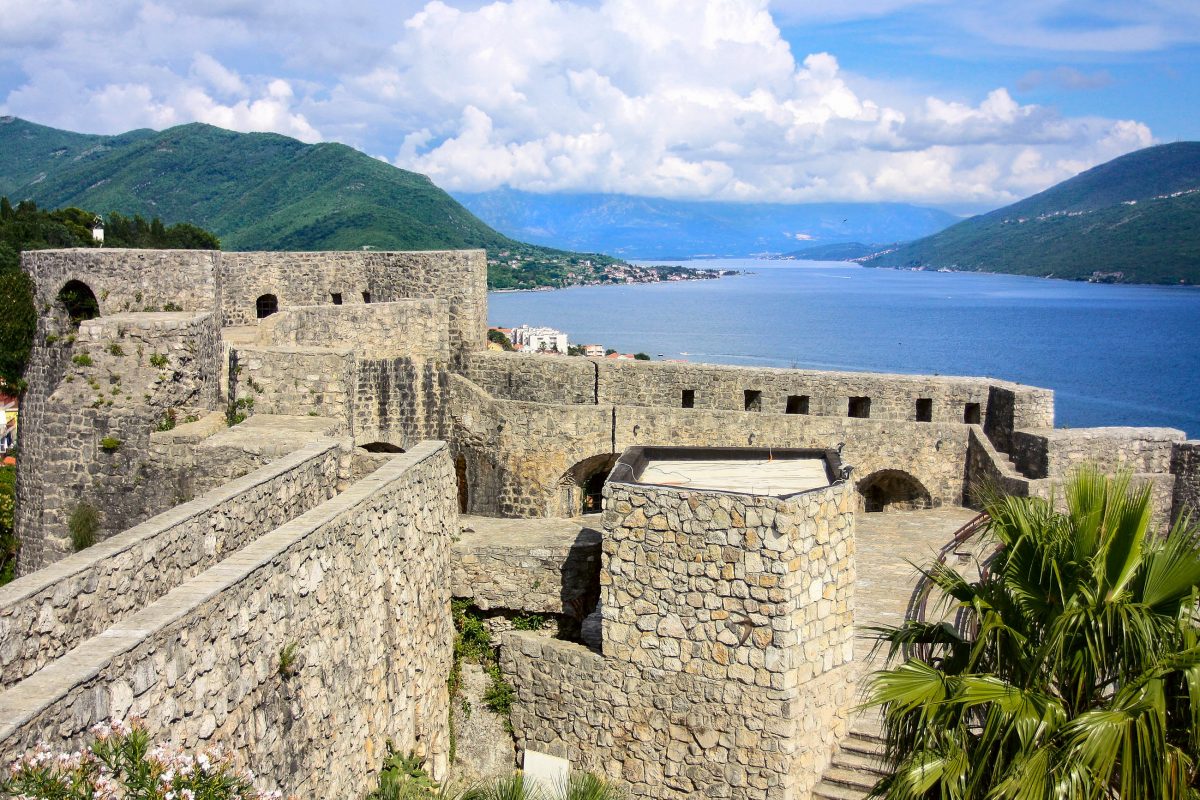
Die „blutige Festung“ hat ihren gruseligen Namen höchstwahrscheinlich von den Hinrichtungen, die dort früher durchgeführt wurden. Mit einem idealen Weitblick über die Bucht von Kotor befand sich hier damals die militärische Kommandozentrale von Herceg Novi. Heute dient es als historische Kulisse für Theater- und andere kulturelle Aufführungen.
Španjola-Festung
Gegenüber der Kula-Festung führt ein schmaler Pfad zur „spanischen Festung“, die bereits 170m über dem Meer liegt. Das Fort aus dem mittleren 15. Jahrhundert wurde während der zweijährigen spanischen Herrschaft 1539 errichtet und kann kostenlos besichtigt werden. Es eröffnet ebenso spektakuläre Panoramablicke über die Bucht von Kotor.
Manastir Savina
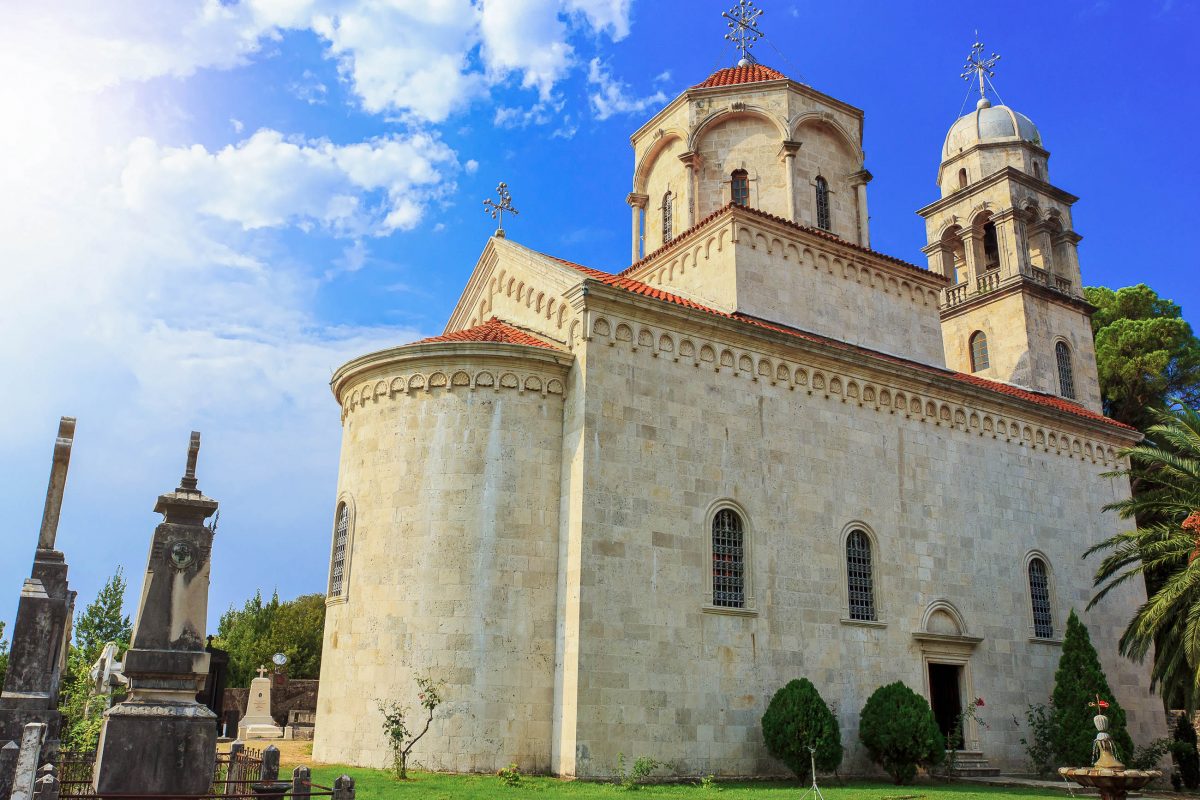
Etwas weiter östlich des Stadtzentrums bei Meljine gelegen bietet das Savina-Kloster nicht nur den obligatorischen Ausblick über die Bucht von Kotor, sondern auch drei wunderschöne orthodoxe Kirchen, die aus der katholischen Sakral-Welt von Herceg Novi hervorstechen.
Zwei davon sind der Muttergottes gewidmet, die dritte etwas abseits stehende dem serbischen Gründungsheiligen Sava. Auch hier durfte Petar II. Petrović die Schulbank drücken.
Die zweite Berühmtheit im Manastir Savina war der junge Künstler Lovro Dobričević aus Kotor, der auch die Kathedralen von Kotor und Dubrovnik und die Kirchen der Klosterinsel Gospa od Škrpjela vor Perast mit kunstvollen Fresken schmückte.
Kirche des Erzengels Michael
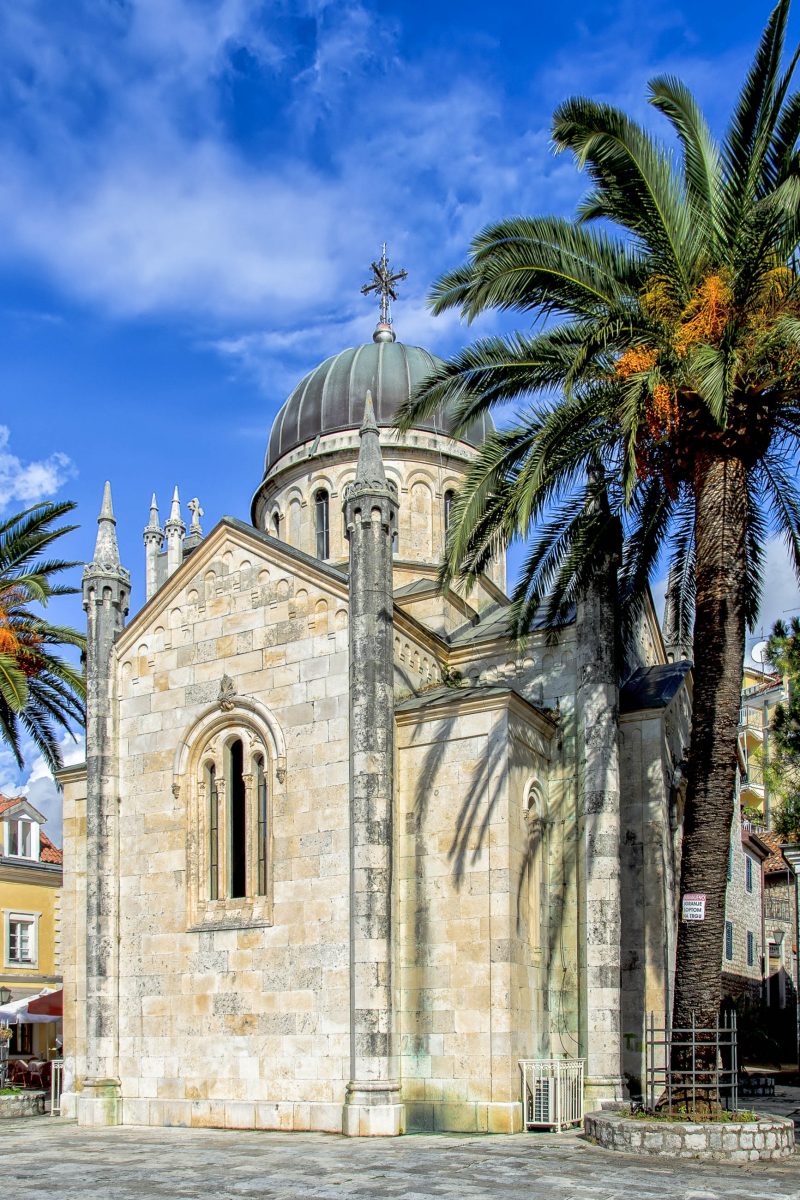
Den historischen Kern von Herceg Novi betritt man durch das Tor am Uhrenturm „kula sahat“, der das inoffizielle Wahrzeichen der Stadt darstellt.
Wenig später erhebt sich die orthodoxe Kirche des Erzengels Michael „Sveti Arhangela Mihaila“.
Ihre hübsche Architektur stammt aus dem späten 19. Jahrhundert und weist romanische, gotische, byzantinische und sogar arabische Elemente auf.
In ihrem Inneren findet man eine ganz besondere Sehenswürdigkeit. Die Wand der Heiligenbilder besteht nicht wie gewöhnlich aus Holz, sondern aus schneeweißem Marmor.
Hieronymus-Kirche
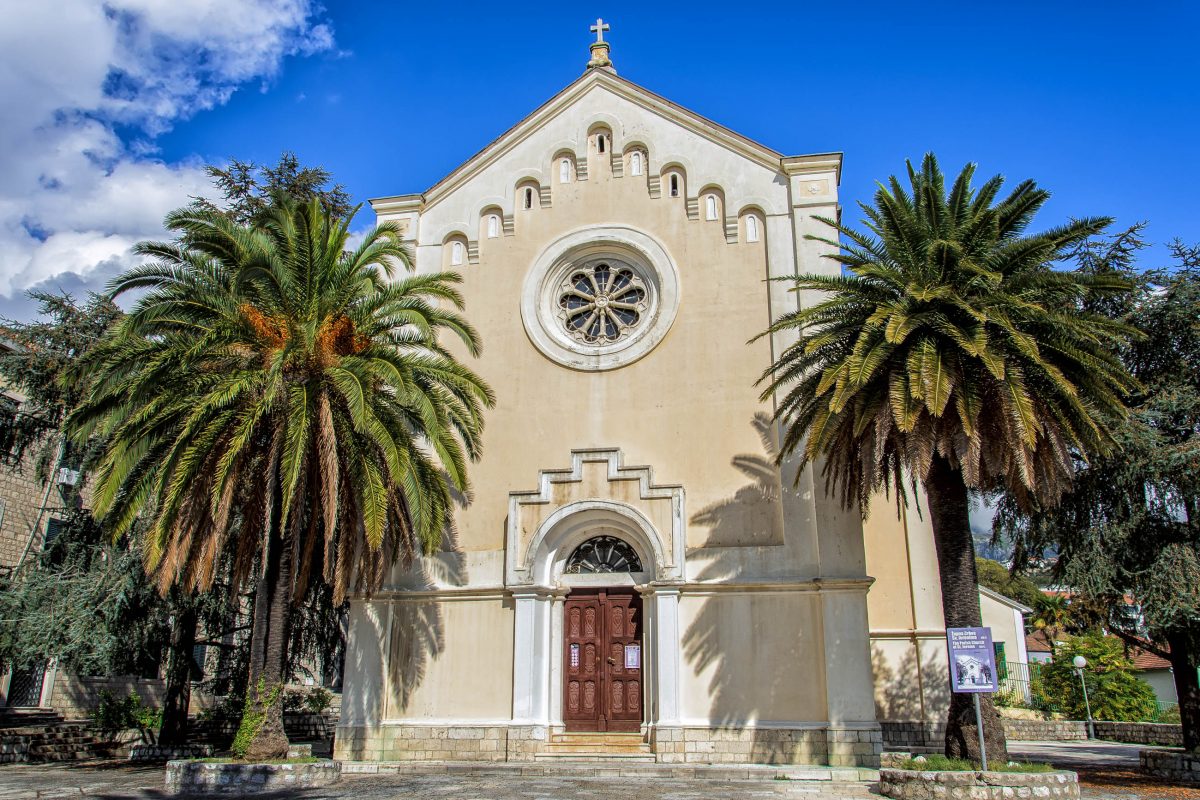
Die römisch-katholische Kirche Sveti Jeronima in Herceg Novis Altstadt stammt aus dem Jahr 1850 und wetteifert mit der Erzengel-Michael-Kirche in puncto Innenausstattung.
Deren prunkvoller marmornen Ikonenwand hat sie einen hölzernen Hauptaltar aus dem Jahr 1678 entgegenzusetzen, ein Geschenk des obersten venezianischen Feldherren nach der Befreiung von den Türken, sowie weitere Gemälde und kostbare Goldschmiedearbeiten. Von außen ist die einschiffige Sveti Jeronima kaum einen zweiten Blick wert.
Ausflugstipp: Blaue Grotte (Plava Spilja)
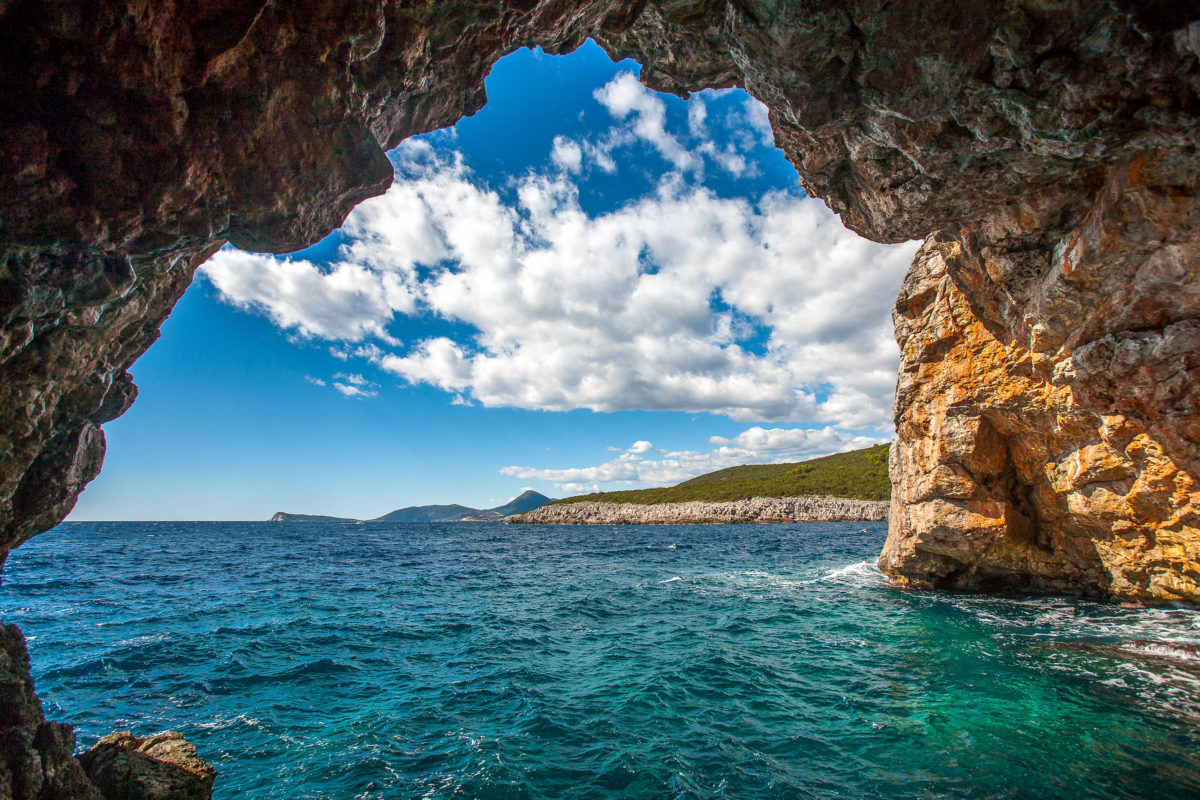
An den Stränden Zanjice oder Miriste in der Nähe von Herceg Novi legen die Ausflugsboote zur Blauen Grotte ab. Innerhalb dieser faszinierenden Wasserhöhle schimmern der Meeresgrund, die Felswände und die Decke in den verschiedensten Blautönen. Schwimmen und Tauchen im warmen Wasser dieser unwirklichen Umgebung ist eine Attraktion für sich.
Geschichte von Herceg Novi
Herceg Novi wurde erst 1382 gegründet und ist damit eine der jüngsten Städte an der Adria. Gründervater war der bosnische König Tvrtko I., der sich mit einer eigenen Hafenstadt von Kotor und Dubrovnik unabhängig machen wollte. Damals hieß die Stadt noch Sveti Stepan, seinen heutigen Namen erhielt sie von Herzog Stjepan Vukčić, der auch der Herzegowina seinen Namen gab.
Zuerst von den Türken und dann von den Venezianern erobert fiel es unter dem italienischen Namen „Castelnuovo“ schließlich auch in österreichische Herrschaft. Erst ab 1919, als es Jugoslawien angehörte, hieß es wieder Herceg Novi.
Weiterführende Links:

